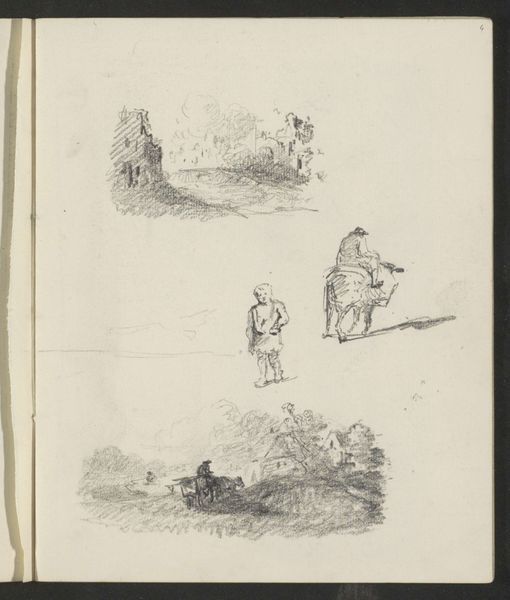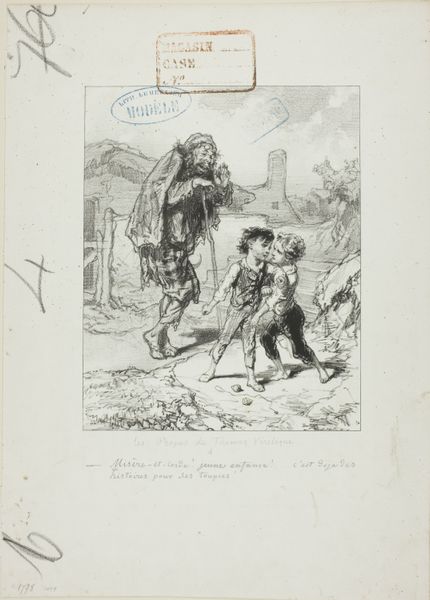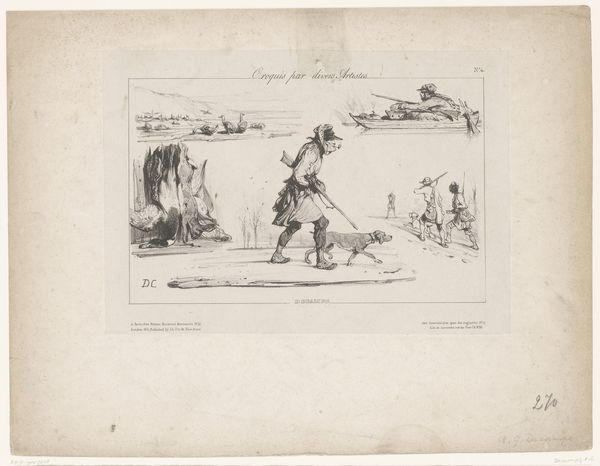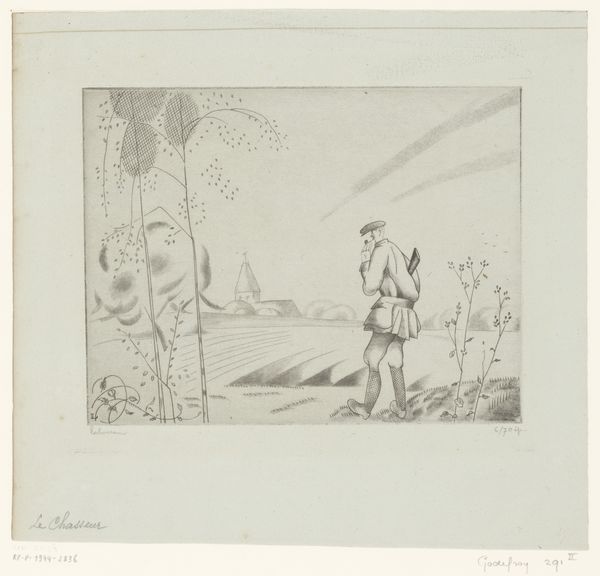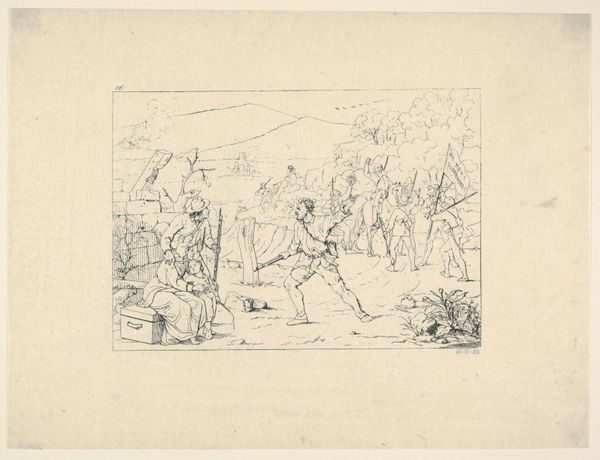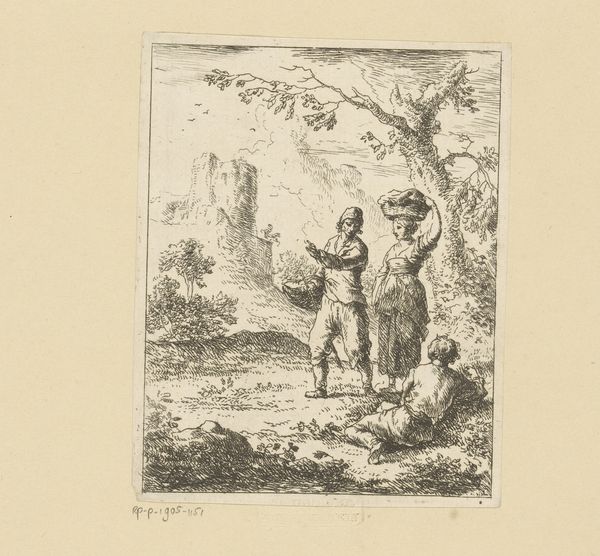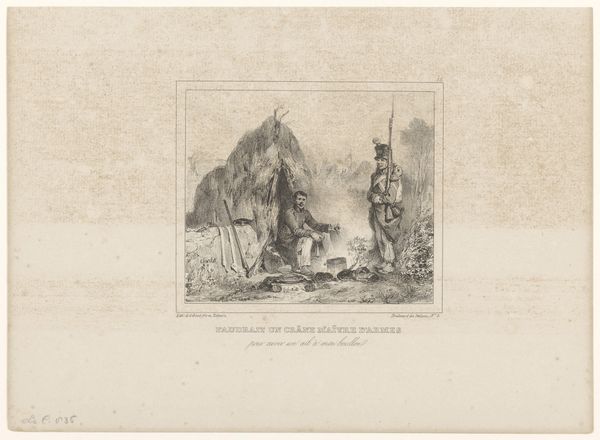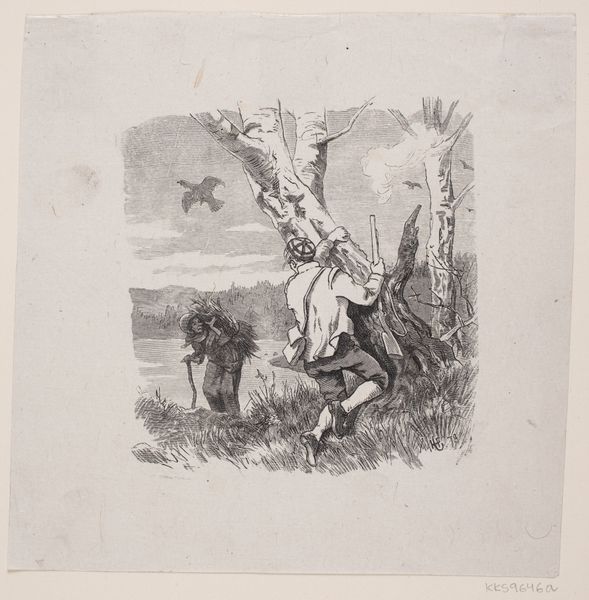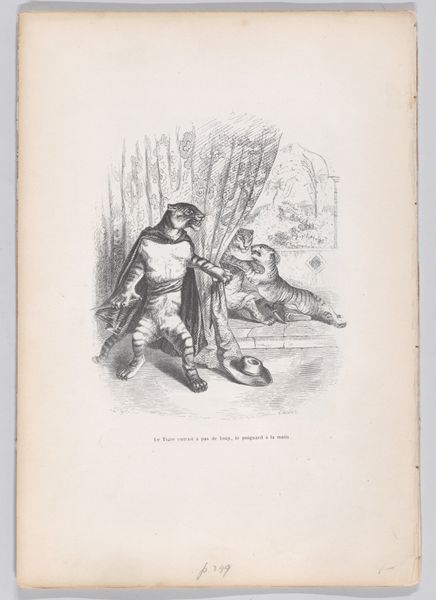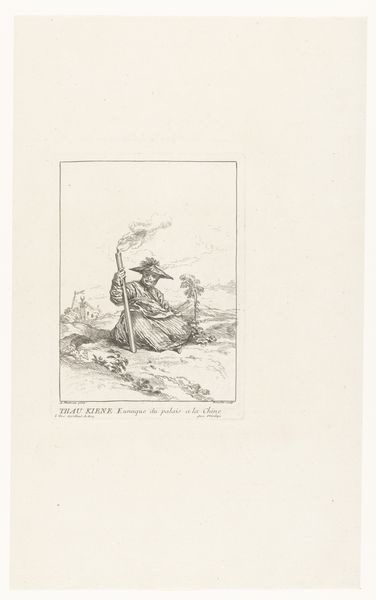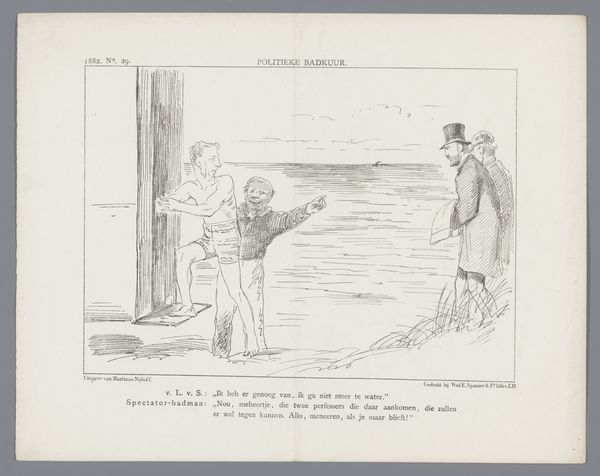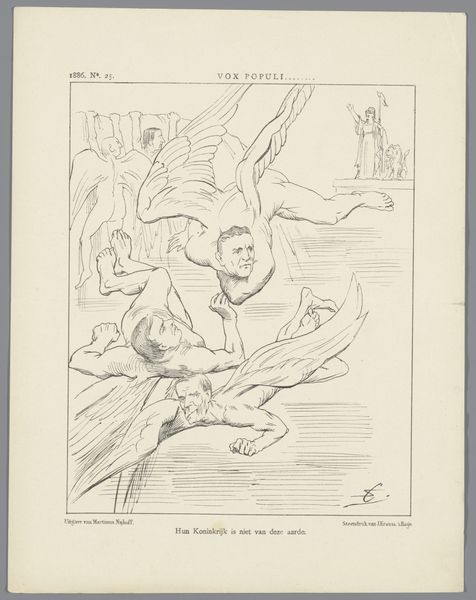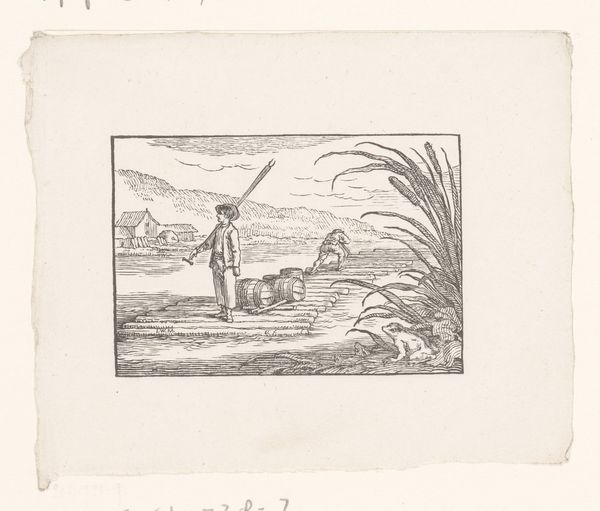
drawing, pen
#
drawing
#
comic strip sketch
#
quirky sketch
#
narrative-art
#
caricature
#
personal sketchbook
#
idea generation sketch
#
sketchwork
#
ink drawing experimentation
#
thumbnail sketching
#
sketchbook drawing
#
pen
#
storyboard and sketchbook work
#
academic-art
#
sketchbook art
Dimensions: height 215 mm, width 275 mm
Copyright: Rijks Museum: Open Domain
Curator: This is a pen drawing from 1873 by Johan Michaël Schmidt Crans, titled "Spotprent over de Tweede Kamer", a cartoon about the Dutch Parliament. It's quite a stark composition. Editor: The immediate impression is one of violence embedded in bureaucracy. The barren landscape juxtaposed with a very small, vulnerable figure leaning against a tree is unsettling. It seems both stark and strangely theatrical. Curator: Exactly. Let's unpack that. Crans uses the symbolic language of caricature to critique parliamentary processes. We see a figure labeled "Kamer," short for "Tweede Kamer," aiming a crossbow labeled with political aspirations at a child beneath a tree who has an apple that reads "Census Act" on their head. Editor: The means of production are so economical here. The simplicity of line and the clear, almost brutal, visual metaphor is striking. What does it tell us about the intended audience, its assumptions, and how meaning was disseminated in that era? Curator: That's a crucial point. The act visually implies the powerful "Kamer," or parliament, metaphorically using its crossbow that reads “Justice & Prudent Spending” poised to harm or impede growth of Dutch Society, who are subjected to stringent Census laws at that time, the arrow aimed at the defenseless, innocent. This narrative highlights social injustice. Editor: The contrast in materials adds to the statement, though: ink on paper, mass produced to sway opinions, a kind of material activism… How accessible would something like this have been, and to whom? Who consumes images of power? Curator: Accessibility is interesting to consider. While perhaps not affordable to the very poorest, such images circulated widely in newspapers and satirical magazines. It fostered a sense of shared political awareness, creating, potentially, a feeling of unified resistance. The power in distributing ideas so widely! Editor: It reveals how even 'high' political struggles depend upon those very accessible, consumable forms. Perhaps, art itself—even in cartoon form—is a powerful and subversive material? Curator: Precisely. The choice of medium serves to democratize commentary. A pen and ink drawing, readily reproducible, as opposed to an oil painting, becomes a weapon in social discourse. Editor: Considering it today offers interesting parallels; It pushes us to examine the materiality of political commentary itself: how and where it’s distributed. Curator: Absolutely. It really calls on us to critically assess power structures and their impact. What mechanisms of resistance can be mobilized by those in need today, still fighting against injustice and inequality. Editor: The simple act of bearing witness – replicated and amplified. I am moved by this idea of art as a carrier of material and social disruption.
Comments
No comments
Be the first to comment and join the conversation on the ultimate creative platform.
